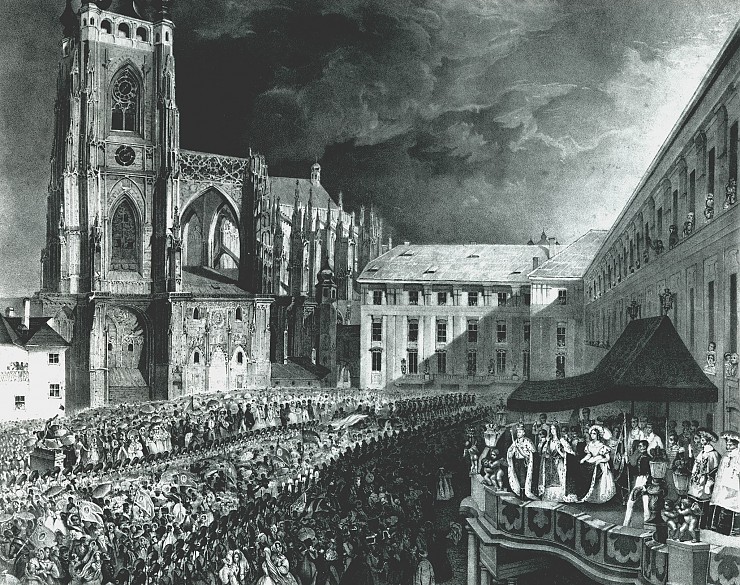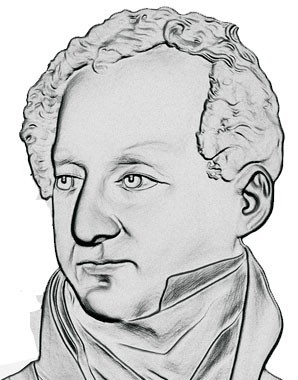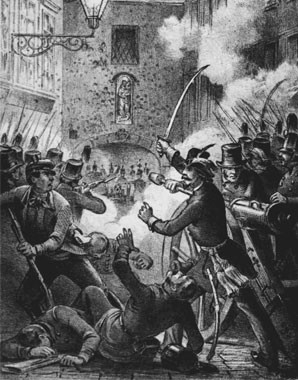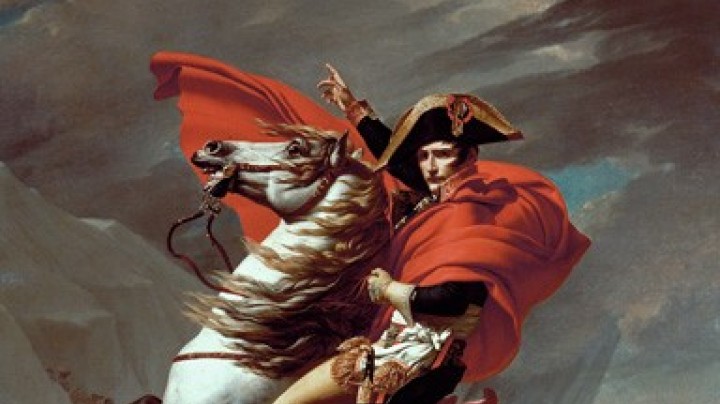Ferdinand: The imperial puppet
Following the death of his father in 1835 Ferdinand ascended to the throne but was de facto little more than a puppet whose strings were pulled by members of the Council of State. Composed of members of the dynasty and leading politicians, this body carried out the affairs of government for the emperor, who was incapable of performing his duties as ruler.
‘God bless you, be good, God will protect you, I do this gladly!’
These were Ferdinand’s last words on abdicating in favour of his nephew in 1848.
Ferdinand’s reaction (expressed in broad Viennese dialect) to the devastating defeat suffered by the Imperial Army of his nephew Franz Joseph at the Battle of Königgrätz in 1866.Even I could have achieved that!
With Ferdinand expected to remain childless, the so-called Family Statute was decreed in 1839 with the aim of regulating the future succession. The provisions contained in this statute remained in force as Habsburg dynastic law until 1918.
Ferdinand’s reign coincided with the time known as the pre-March era, in which massive social and political grievances bubbled away beneath the surface of peace and order. The government pursued a policy of unimaginative conservatism, in which any expression of these grievances by the people was nipped in the bud and brutally suppressed.
One particularly inglorious event during Ferdinand’s reign was the military annexation of the Republic of Cracow. At the Congress of Vienna in 1815, the ancient Polish city of Cracow (Kraków) had been established as a free state under the joint protection of Austria, Prussia and Russia, who divided up the rest of Poland among themselves. In 1846 the Poles rose in revolt in Galicia, and Cracow was suspected by the Great Powers of being a hotbed of resistance against the occupation of Poland. As a result, the Free City was annexed to the Austrian Monarchy with the consent of the conservative powers of Prussia and Russia. During the uprising the Habsburg administration insidiously exploited the ethnic tensions between the Poles and the Ruthenians on the ‘divide and rule’ principle.
The Habsburgs’ unconditional allegiance to the Catholic religion assumed an ugly aspect when the last Protestants were forcibly expelled from the Ziller Valley in Tyrol in 1837.
The era of peace maintained by force ended in 1848. Starting in the Italian provinces, uprisings spread to all the larger cities of the empire. The discontented citizens demanded a comprehensive reform of the political system and the introduction of a constitution guaranteeing rights and political enfranchisement.
Ferdinand’s government countered the revolts partly with force but also with hesitant concessions: freedom of the press was granted and that hated symbol of repression, the ageing State Chancellor Metternich, was dismissed.
Ferdinand’s good nature and naive amiability at first preserved his general popularity. However, the government’s half-hearted concessions combined with mounting pressure from the forces of reform meant that the opportunity for achieving a peaceful solution was missed. By May the situation in Vienna was becoming increasingly dangerous for the imperial family and it was decided to move them to Innsbruck. Determined to cling to his throne, the emperor was assured by those around him that they were merely ‘going for a drive in a carriage’.
In September 1848 the situation escalated. In Hungary a full-scale war of independence against Habsburg rule was raging. In Vienna the Armoury was stormed and the minister of war Latour was lynched by an angry mob. Ferdinand was incapable of grasping the seriousness of the situation when revolution broke out in the streets of Vienna, and is said to have asked “But are they allowed to do that?”
The imperial family fled to Olmütz (Olomouc) in Moravia, and parliament convened at the nearby town of Kremsier (Kroměříž) on 22 November to thrash out the details of a constitution. By 2 December Ferdinand had been persuaded to abdicate, waiving his right to the throne in favour of his nephew Franz Joseph.
The former emperor then retired to Bohemia, spending the rest of his life at Prague Castle and on his extensive estates, venerated by the local population. Away from the limelight of public life his condition improved and he developed a great aptitude for increasing his private fortune, since despite waiving his claim to the throne he had been prescient enough to assert his right to the material inheritance of his father. As a ‘wealthy uncle’ he provided financial support to his young nephew and successor Franz Joseph.
Ferdinand died at the ripe old age of 83 in Prague on 29 June 1875. He is buried in the Imperial Crypt of the Church of the Capuchin Friars in Vienna.
















